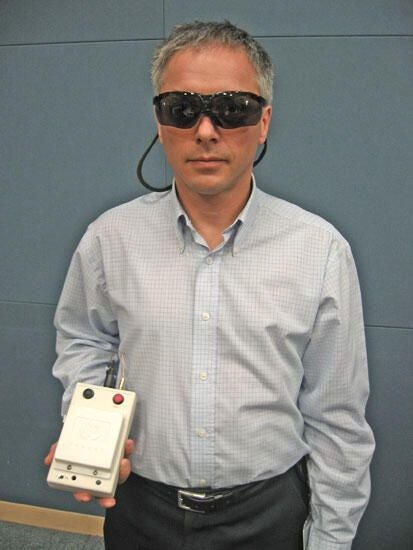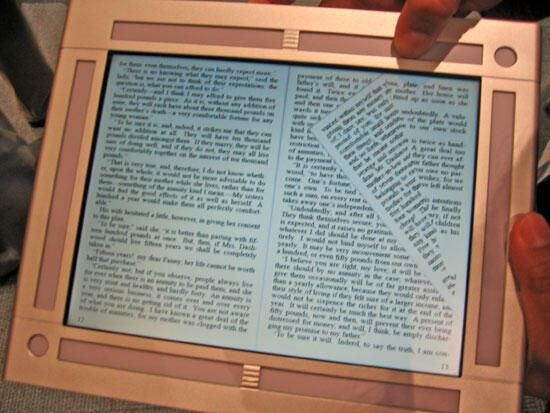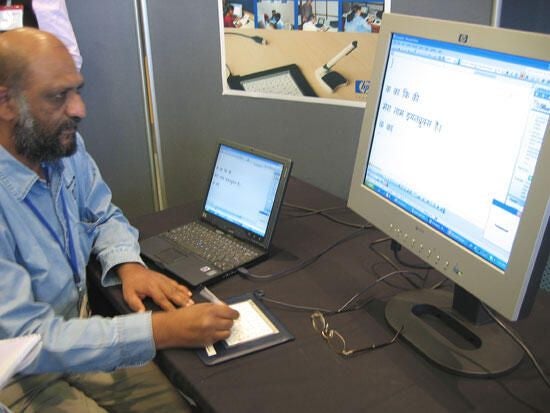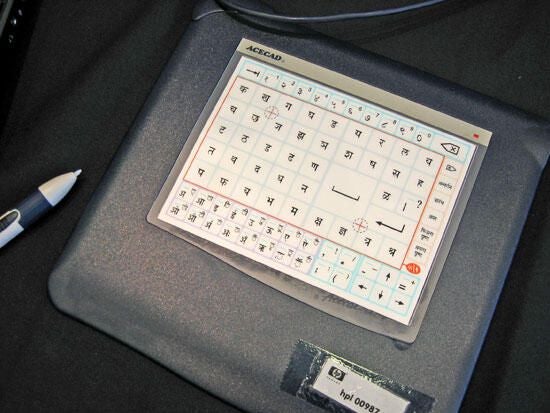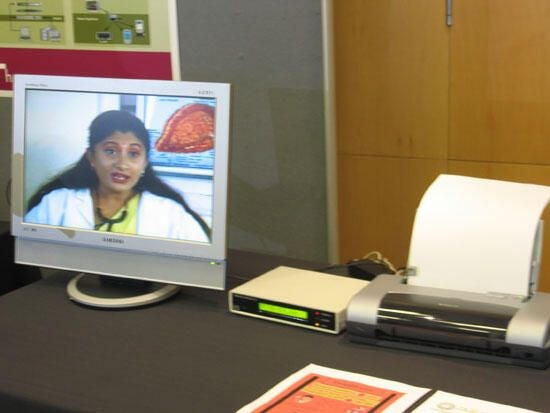Photos: HP looks at future tech
Image 1 of 6
A wearable camera is one idea to come out of the “casual capture” program at Hewlett- Packard’s Bristol labs in the UK. rn
rnOne of the latest prototypes consists of a camera integrated into the center of a pair of sunglasses that can simultaneously capture 1.3- megapixel stills at 7.5 frames per second and 0.3- megapixel video footage at 30 frames per second. rn
rnThe data is stored on a processing unit worn around the waist that can store three hours of footage on its two 20GB disk drives. rn
rnThe camera is continuously recording footage but the user presses a button on the processing unit when something of interest happens that they want to capture. At this point the machine saves the previous 20 seconds and the next five minutes of camera footage. There are currently no product plans for this device.
The quality of the images is surprisingly good–as seen here from footage taken using the prototype wearable camera by HP’s Phil Cheatle on a family holiday climbing in the Italian Dolomites. Cheatle said, “We wanted something that’s ridiculously easy to use.” rn
rnThere is too much raw footage for the user to process and select manually so HP developed image filtering and automatic analysis technology to do the hard work for them. The saved footage is downloaded to a PC, where sophisticated head motion detection algorithms determine which bits are most likely to be of interest to the user and whether a still, panorama or video clip is the most appropriate format. rn
rnThe user can then review the edited footage and raise the “interest threshold” rating so that only highlights are selected or lower the threshold so that more footage is shown.
HP has developed prototype e-book devices that can be used to read books, newspapers and view digital photograph albums. rnrn
Anthony Sowden, project lead on the e-books devices at HP’s Bristol Labs said: “We envisage the device as a media viewer.” rnrn
HP is also looking at integrating audio and video into the devices, which are relatively light and easy to use and have a battery life of around five hours on full brightness. rnrn
The latest prototypes use “riffling” technology that allows the device to show digital book pages that can be turned in a realistic way similar to physical books as seen in the photo above. rn
rnBooks can be viewed in one-page portrait mode or two-page landscape and the device has touch strips around the edge for scrolling up and down and turning pages. rn
rnSome Jane Austen books, which are out of copyright, have been loaded on to the prototypes and HP is currently talking to the Daily Telegraph about the digital newspaper viewer.
One of the aims of HP Labs is to develop products for “the next billion customers” who will come from the so-called “Bric” countries–Brazil, Russia, India and China. Ajay Gupta, director of HP labs in India, said, “In 20 years there will be twice as much opportunity in the Bric countries than the G6.” rn
rnRepresentatives from HP Labs India were in Bristol to demonstrate some of the latest products to come out of the labs in Bangalore. rnrn
One of these is called a “gesture keyboard,” which allows people to input text on PCs in Indian scripts without knowledge of English or typing. It can be used for inputting data in a local language, Internet search, Web browsing and e-mail. rn
rnThere are 1,500 combinations of syllabic units in Hindi so a conventional keyboard with language overlay is not a good solution for those who don’t speak English.
The gesture keyboard consists of a graphics tablet with an electronic pen or stylus to capture digital ink and a software layer to recognize the shapes. The layout has base characters laid out and the user writes the modifier (matra) on the base consonant cell using the pen. rnrn
It took a year for HP Labs in India to develop the handwriting recognition technology for the keyboard and it has a patent for the character positioning and gestures. rn
rnHP claims the keyboard will help address the problem of poor PC and computer literacy among non-English speaking people in developing countries. rn
rnIt takes just 10 to 15 minutes for a Hindi speaker to get to grips with this gesture keyboard, which was officially launched last month. HP licenses it to a third party and it costs around $50.
The Bangalore labs have also developed printcast technology that allows people to print documents related to information on a TV program as they watch. rn
rnPrint applications such as this are more relevant in emerging markets such as India and China, where TV and radio broadcasting are much more pervasive than the Internet. In India, 650 million people have access to a TV compared to 15 million who have access to the Internet. rn
rnHP Labs India is doing field trials with ISRO, the Indian government’s satellite company, and a state government broadcaster. It has been tested in 10 schools in the town of Tumkur near Bangalore. rn
rnThe software embeds the print document into the TV signal. A decoder then unwraps the document from the TV signal. At the appropriate point during the TV program, the teacher can then print out the relevant document and share it with the pupils. rn
rnHP plans to license the software to set-top box manufacturers and the initial use is likely to be for government education programs. But HP admitted that future uses could allow advertisers to let viewers print information related to the advert they are watching.

-
-
Account Information
Contact Bill Detwiler
- |
- See all of Bill's content
